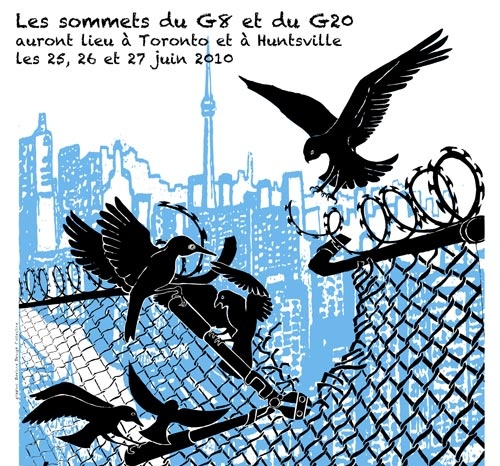 |
 |
 |
 |
 |
 |
|
 |
 |
 |
 |
 |
 |
 |
Régions du Québec |  |
 |
 |
|
 |
 |
|
 |
 |
|
 |
 |
 |
 |
 |
 |
Rubriques (sujets) |  |
 |
 |
|
 |
 |
|
 |
|
 |
 |
 |
The city where the dead are left lying on the streets
Death toll that will evenually reach tens of thousands.
The city where the dead are left lying on the streets
In a makeshift grave on the streets of New Orleans lies the body of Vera Smith. She was an ordinary woman who, like thousands of her neighbours, died because she was poor. Abandoned to her fate as the waters rose around her, Vera's tragedy symbolises the great divide in America today
By Andrew Buncombe in New Orleans
Published: 06 September 2005
However Vera Smith may have lived her life, one thing was certain. In death, she had no dignity. Killed in the chaotic aftermath of Hurricane Katrina, her body lay under a tarpaulin at the junction of Magazine Street and Jackson Avenue for five full days. Not her friends, her grieving husband, not her neighbours could persuade the authorities to take her corpse away.
Finally, disgusted by the way she had been abandoned - and concerned, too, about the health implications of advancing decomposition - her friends buried her in a makeshift grave. A local man fashioned a simple cross, and on top of the soil that was shovelled over her body he placed a white plastic sheet and wrote "Here Lies Vera. God Help Us."
The overwhelming majority of the people who died or suffered in this disaster were, like Vera, the poor - that segment of American society that so often appears to be overlooked or deliberately ignored. These were the people unable to evacuate, who had nowhere else to go or else no means of getting there. These were the people who simply did not have the resources to get a body taken to the morgue.
As the floodwaters are pumped out of New Orleans' streets, rescue workers are bracing themselves for further grisly discoveries and a death toll that will evenually reach tens of thousands.
With the authorities overwhelmed by the effort to find and rescue the living, they have been forced to abandon the dead where they lie or, more often, where they float. Vera, aged 65, was apparently killed by a hit-and-run driver as New Orleans descended into chaos and anarchy the day after the storm struck. Nothing better underlines the breakdown in the civic ability to respond to this disaster than those police officers who shrugged their shoulders helplessly when they were asked to remove Vera's body.
"She had gone out to the shop to get something. We knew it was going to close. We did not want to run out of anything," Vera's husband, Max Keene, 59, told The Independent yesterday, standing outside the couple's humble rented home in the neighbourhood known as Irish Channel. "I did not know what had happened to her. A guy came round to say she was lying by the side of the road with a piece of cardboard over her. It was me that went and put the tarp over her."
He added: "I spoke to the police and asked them to take her away but they just told me to get the hell out of there. It was dark and they were clearing the streets."
Max and Vera were not married in the formal sense but they had been together for 25 years. They had met when she was working as a waitress in a bar and he was working off-shore for one of the many oil companies that operate in the Gulf of Mexico.
There was nothing particular that struck Max about Vera, he recalled, but he liked her sense of fun, her spirit. She liked clothes and shoes and shopping and - like many people in this city - sometimes she liked a drink. She also liked books and every Sunday she went to the local Catholic church, St Mary's Assumption. Smith was her name from her first marriage; she was originally from Mexico.
"She was married, her old man left her. I had a different girlfriend then, she left me. It was the right time. We just got together. Every now and then it happens that way," said Mr Keene, tears in the corners of his eyes. "We used to lie in bed. I'd drink bourbon, she'd read books."
Who knows how many other stories there are like Vera's; how many other bodies lie scattered across this besieged city? Local officials refuse to predict a total but one thing is certain, the city is littered with abandoned corpses. They are left in the street, in buildings, in the backs of trucks wrapped in sheets with a name tag attached. One woman's body was discovered sitting upright in a chair at the back of a dental surgery. The rescue workers have had to leave them and instead concentrate on those who are alive.
Harold Brandt, a doctor from Baton Rouge who has been assisting rescue crews as they search the still flooded areas of the city for survivors, said the biggest concerns was the number of bodies that may be discovered in attics."One of the things with Hurricane Betsy [in 1965] was that people climbed into their attics to avoid the rising water and then they had no way to escape and they drowned. Now, veterans of hurricanes will always put an axe in their attic."
Vera, of course, was not killed by the hurricane - as Max Keene stresses. The couple had survived the storm and, knowing they would face days with out electricity or water - or any assistance from the authorities, Vera was on her way to the local store for supplies when she was knocked down.
Patrick McCarthy, a retired electrician, was one those who helped bury her. "If you need a metaphor for failure, this is as good as it gets," he said. "Everybody should be buried. [This is] an insult to our humanity."
However Vera Smith may have lived her life, one thing was certain. In death, she had no dignity. Killed in the chaotic aftermath of Hurricane Katrina, her body lay under a tarpaulin at the junction of Magazine Street and Jackson Avenue for five full days. Not her friends, her grieving husband, not her neighbours could persuade the authorities to take her corpse away.
Finally, disgusted by the way she had been abandoned - and concerned, too, about the health implications of advancing decomposition - her friends buried her in a makeshift grave. A local man fashioned a simple cross, and on top of the soil that was shovelled over her body he placed a white plastic sheet and wrote "Here Lies Vera. God Help Us."
The overwhelming majority of the people who died or suffered in this disaster were, like Vera, the poor - that segment of American society that so often appears to be overlooked or deliberately ignored. These were the people unable to evacuate, who had nowhere else to go or else no means of getting there. These were the people who simply did not have the resources to get a body taken to the morgue.
As the floodwaters are pumped out of New Orleans' streets, rescue workers are bracing themselves for further grisly discoveries and a death toll that will evenually reach tens of thousands.
http://www.livejournal.com/users/mparent7777/2536409.html
Katrina: The Video
Ross
September 6, 2005
A video about Katrina, the politics and the aftermath.
http://www.livejournal.com/users/mparent7777/2537772.html
CRIMES AND CORRUPTIONS OF THE NEW WORLD ORDER NEWSWIRE - September 6th, 2005
Updated throughout the day:
http://www.livejournal.com/users/mparent7777/2005/09/06/
MARC PARENT
CRIMES AND CORRUPTIONS OF THE NEW WORLD ORDER NEWS
 |
 |
 |
 |
Dossier G20 |  |
 |
 |
|
 |
 |
|
 |
Nous vous offrons plusieurs reportages indépendants et témoignages...

Liste des activités lors de ce « contre-sommet » à Toronto Vous pouvez aussi visiter ces médias alternatifs anglophones... Centre des médias Alternatifs Toronto 2010.mediacoop.net Media Co-op Toronto http://toronto.mediacoop.ca Toronto Community Mobilization www.attacktheroots.net (en Anglais) |
 |
 |
 |
 |
 |
 |
 |
CMAQ: Vie associative |  |
 |
 |
|
 |
 |
|
 |
 Collectif à Québec: n'existe plus. Impliquez-vous ! |
 |
 |
 |
 |
 |
 |
 |
 |
|
 |
 |
 |
Ceci est un média alternatif de publication ouverte. Le collectif CMAQ, qui gère la validation des contributions sur le Indymedia-Québec, n'endosse aucunement les propos et ne juge pas de la véracité des informations. Ce sont les commentaires des Internautes, comme vous, qui servent à évaluer la qualité de l'information. Nous avons néanmoins une
Politique éditoriale
, qui essentiellement demande que les contributions portent sur une question d'émancipation et ne proviennent pas de médias commerciaux.
This is an alternative media using open publishing. The CMAQ collective, who validates the posts submitted on the Indymedia-Quebec, does not endorse in any way the opinions and statements and does not judge if the information is correct or true. The quality of the information is evaluated by the comments from Internet surfers, like yourself. We nonetheless have an
Editorial Policy
, which essentially requires that posts be related to questions of emancipation and does not come from a commercial media.


